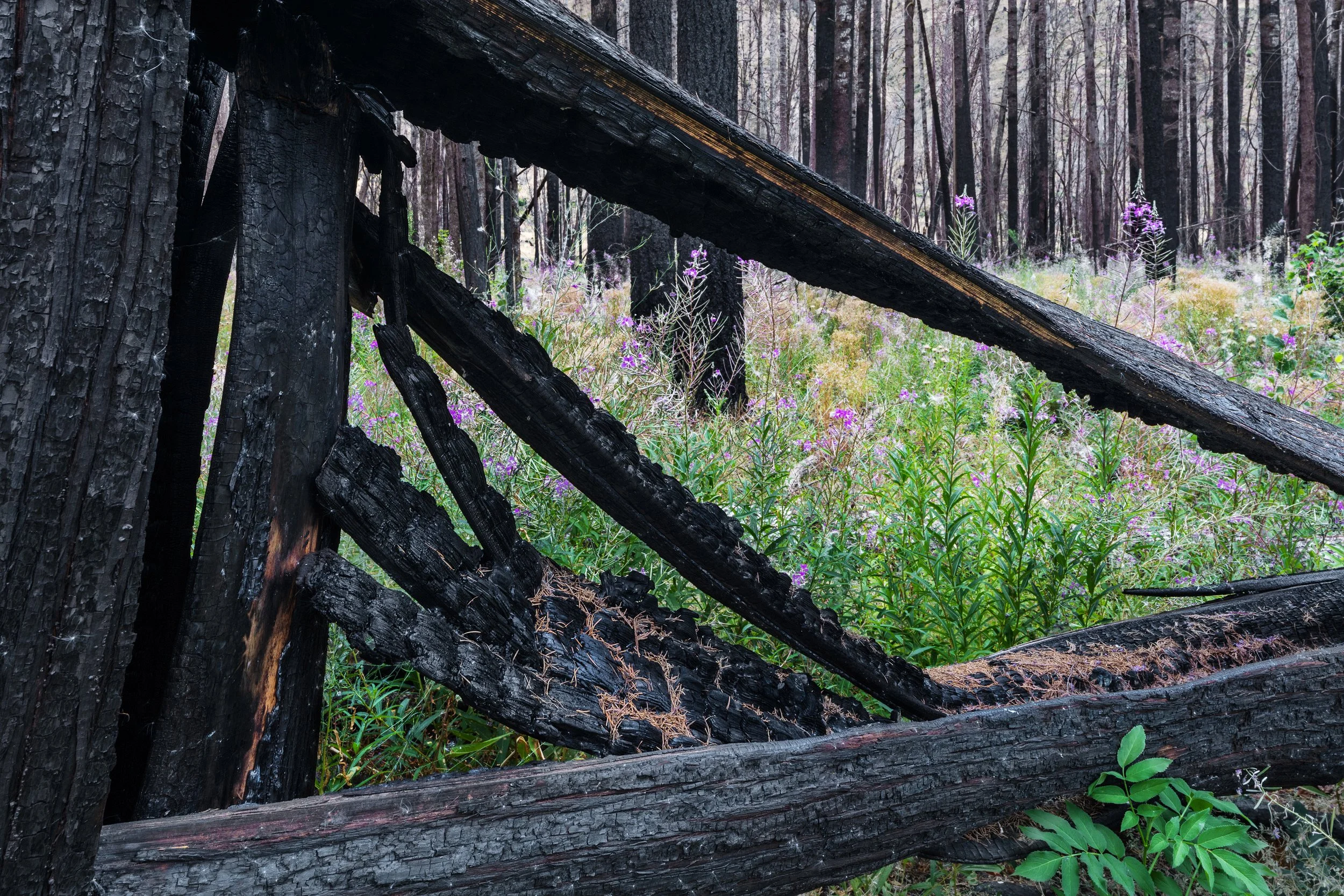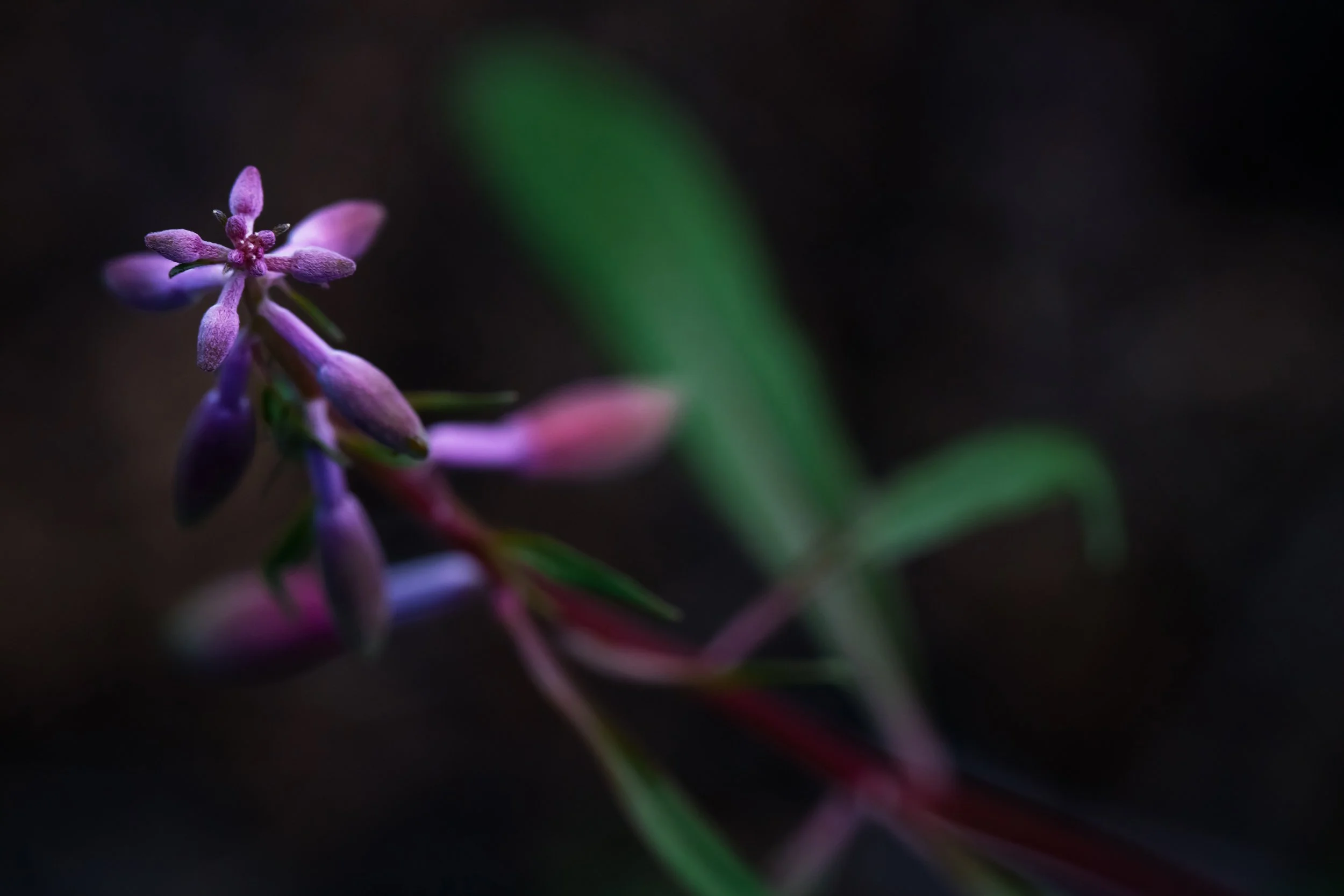























Your Custom Text Here
INTRODUCTION Finn Rock Reach and Blue River Conservation Easement
Our two project sites, Finn Rock Reach and Blue River Conservation Easement, are just a few miles from each other along the McKenzie River on the wet, west side of the Cascade Range in central Oregon. The forest has a very long history of fire and regeneration, characterized by a mixture of low-severity / high-severity burning. While this project looks at many forest fire details specific to this region, the general perspective of addressing forest resilience and the uncertain future is useful anywhere that forests and fire coexist.
Finn Rock Reach
Finn Rock Reach is beside the river on flat ground with rich loamy soil. It is flanked on either side by steep slopes owned and managed by private timber companies. We’ve identified three zones on our FRR study site, each with their own characteristics. The riparian zone has a mix of hardwood trees, the second zone had been the site of a logging camp and the last zone we call ‘the forest’ because, despite having been logged a century ago, it has grown back with characteristics of a native Pacific Northwest Douglas fir forest.
Despite the impact of these different natural and human legacies, the fire burned away all the understory vegetation in each of the three zones. Scorched foliage in the tops of the taller trees fell to the forest floor in the weeks after the fire. This yellow-orange needle cast was the first return of color on the otherwise black and grey forest floor.
Vegetation succession began in the months following the needle cast. Filamentous strands of fire-loving fungi permeated the soil to help stabilize it and take up nutrients released by the burning. Next, neon green fire moss carpeted the ground, followed by pervasive, 6 feet tall, fireweed purple flowers, then white seed fluff.
This profusion of vegetation in the aftermath of the fire is a powerful reminder of a forest’s resilience.
INTRODUCTION Finn Rock Reach and Blue River Conservation Easement
Our two project sites, Finn Rock Reach and Blue River Conservation Easement, are just a few miles from each other along the McKenzie River on the wet, west side of the Cascade Range in central Oregon. The forest has a very long history of fire and regeneration, characterized by a mixture of low-severity / high-severity burning. While this project looks at many forest fire details specific to this region, the general perspective of addressing forest resilience and the uncertain future is useful anywhere that forests and fire coexist.
Finn Rock Reach
Finn Rock Reach is beside the river on flat ground with rich loamy soil. It is flanked on either side by steep slopes owned and managed by private timber companies. We’ve identified three zones on our FRR study site, each with their own characteristics. The riparian zone has a mix of hardwood trees, the second zone had been the site of a logging camp and the last zone we call ‘the forest’ because, despite having been logged a century ago, it has grown back with characteristics of a native Pacific Northwest Douglas fir forest.
Despite the impact of these different natural and human legacies, the fire burned away all the understory vegetation in each of the three zones. Scorched foliage in the tops of the taller trees fell to the forest floor in the weeks after the fire. This yellow-orange needle cast was the first return of color on the otherwise black and grey forest floor.
Vegetation succession began in the months following the needle cast. Filamentous strands of fire-loving fungi permeated the soil to help stabilize it and take up nutrients released by the burning. Next, neon green fire moss carpeted the ground, followed by pervasive, 6 feet tall, fireweed purple flowers, then white seed fluff.
This profusion of vegetation in the aftermath of the fire is a powerful reminder of a forest’s resilience.